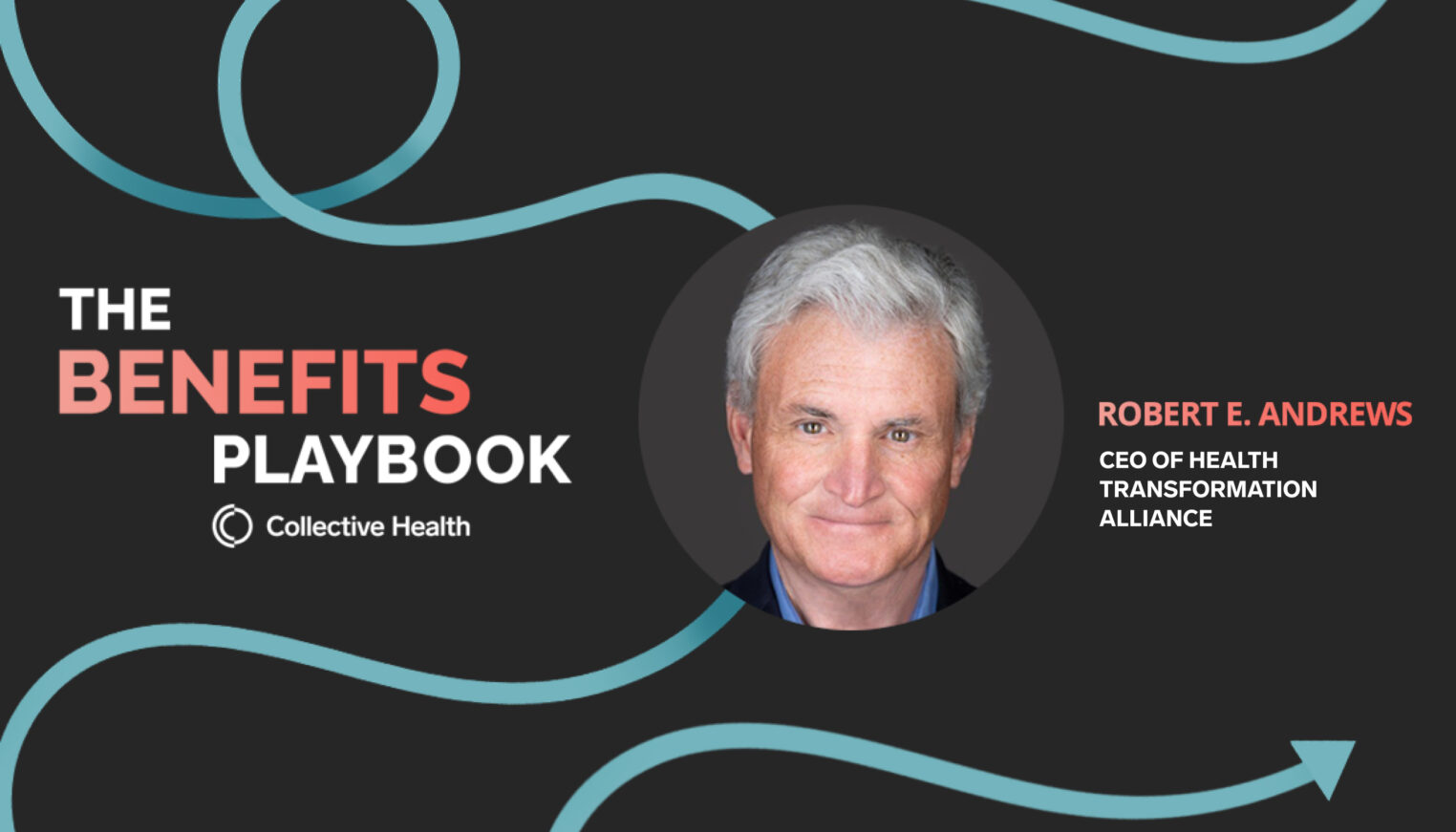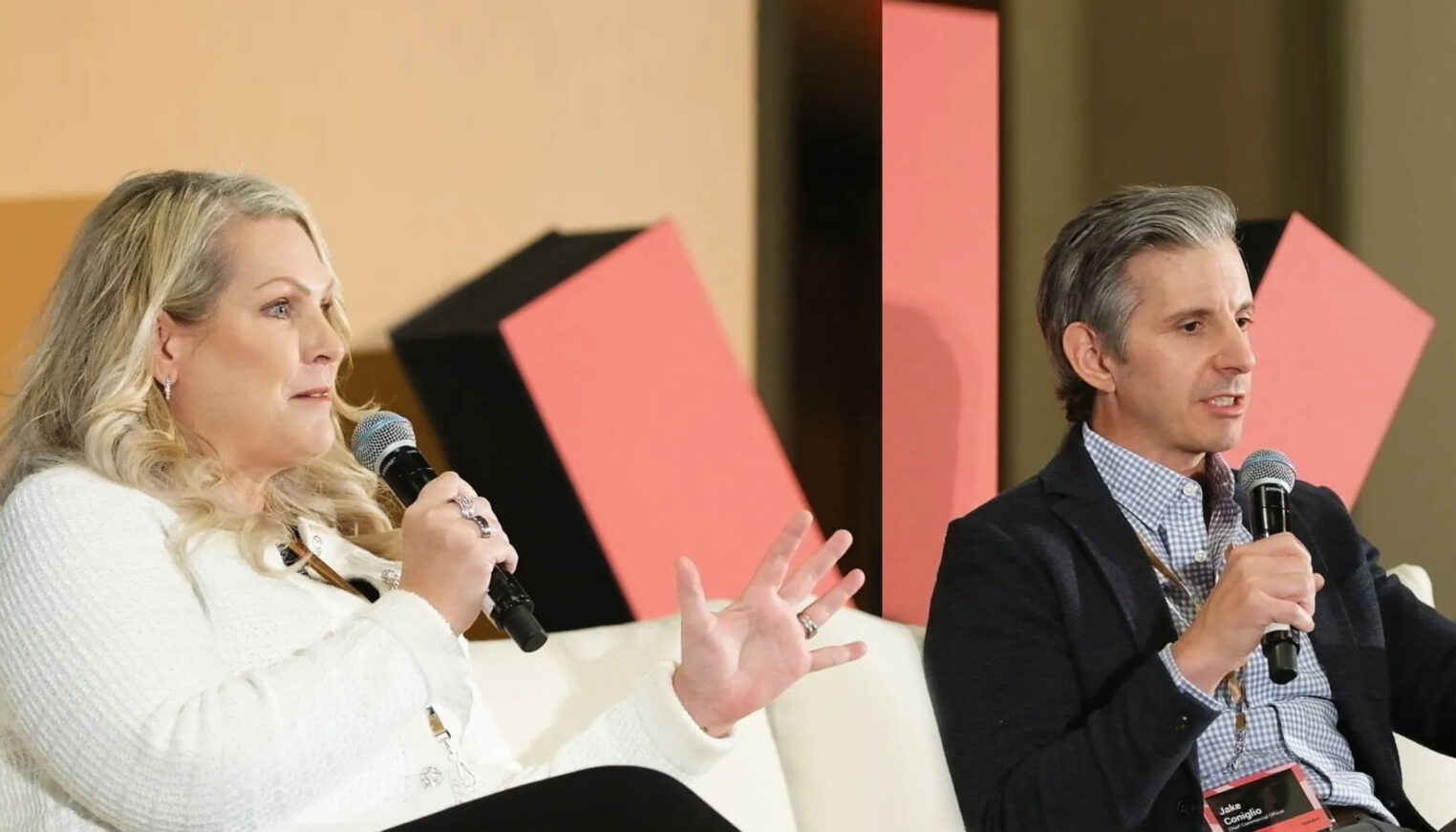Many thanks to all that attended Together with Collective Health! That’s a wrap on this year’s event, and we’re so grateful for all who were able to join and participate.
We will have more to share in the coming weeks, including building on the specific strategies and tactics that were discussed through the event. For now, we wanted to recap the highlights and key themes for those who couldn’t make it, didn’t get to attend a particular session, or just want to relive some of the most interesting moments.
Make sure to join our conference for bold benefits leaders.
Register here.
Recap for days 1 and 2 can be found here. For days 3 and 4, read on….
- Your employees’ physical and mental health is the health of your organization
Kaye Foster, an advisor at The Boston Consulting Group and former VP of HR at Johnson & Johnson, kicked off Wednesday’s keynote with a simple but prescient reminder that “employees generate revenue, not buildings.” Kaye stressed the importance of taking care of your people first and always, and how the global pandemic should force a change in our collective mindset. More than ever, the psycho-social needs of employees will need to be met, and supported for the long term. She made the comparison to athletes, who are supported for all of their nutrition, physical therapy, and spirituality, in order to perform at their highest level. Without athletes, the buildings they plan in don’t mean a thing. Laszlo Bock, CEO of Humu and former SVP of People at Google, referenced the bell curve of productivity he’s long studied. Especially the employees at both tail ends—whether those burnt out from high productivity, or those struggling with something that’s keeping their productivity low—who need to be cared for to find better balance. Leaders from companies like Box and Jazz Pharmaceuticals echoed this sentiment, and shared the ways they’ve dedicated significant resources and tapped into the latest technologies to help ease access to wellbeing and behavioral health services to make them more accessible—in a way that simply wasn’t achievable just a few years ago.
I’ve tried not to focus on ‘new normal’, because I think it keeps me anchored on what used to be normal as a reference point. I’ve been thinking about it as a reset.
– Kaye Foster
- Counterpoint to finding a “new normal”: Think of it as a reset
“I’ve tried not to focus on ‘new normal’, because I think it keeps me anchored on what used to be normal as a reference point. I’ve been thinking about it as a reset.” said Kaye Foster. We learned throughout the week at Together that there is a genuine need to collectively pause and think differently about employee support. Many of the benefits leaders we heard from talked about reconsidering certain tactics and programs that may have been effective at one point, but “what are they doing for you now?”Cathy Bolz, former Global Head of Benefits at Bloomberg, reflected on her days as a benefits leader following 9/11, when Employee Assistance Programs (EAPs) emerged. For a while, EAPs worked. But overtime, as circumstances changed in our workplaces and communities, and as new solutions for behavioral health emerged, it forced benefits leaders like Cathy to rethink their approach. There’s no better time to break from the status quo than now. CEOs and other leadership recognize this, they’re paying attention, and they’re open to ideas. As rocky as 2020 has been, it has forced an open and honest dialogue across our communities and workplaces like never before. - A lack of trust in our government and societal institutions creates an opportunity for employers
Laszlo Bock is not one to shy away from calling it how he sees it, and provided some candid perspective on what this moment means for companies: “All the data says that people in the US don’t trust the government, they don’t trust the media. What people trust more are companies, and so there is an opportunity to not just do the right thing inside your company but to make some noise, and noise is not just a hashtag.” Corporate leaders can be the change agents in our nation today. Unlike entrenched institutions, employers are not bound by bureaucracy and tradition, and they have the agility to move things forward in a positive way. Our keynote speaker on Thursday, Dr. Mark McClellan of the Duke-Margolis Center For Health Policy, reiterated as much in acknowledging that there’s huge pressure on businesses, and an opportunity, in the absence of a coordinated government response to the pandemic. CEOs and executives across America can use their collective voice for good, to protect the health of millions of lives by understanding the benefits that are best for people now, and fully embracing diversity and inclusion. Josh Freund, Associate Director of Health & Wellbeing at Jazz Pharmaceuticals, provided a comforting example of how the company’s CEO encouraged the implementation of innovative behavioral health programs, and worked to break the stigma of mental health by talking about it openly with Jazz’s employees. Openness might just be a starting point, but many of our speakers this week emphasized that it can’t be overlooked in its importance to your people. - Do the unexpected
Expectations in healthcare, and specifically expectations around support for individual health and wellbeing, are extraordinarily low—and they have been for far too long. However, we’re seeing a turning point in how we as a society think about these areas, and from companies across the U.S in how they support them. When we reflect on all the great conversations that were had over the last four days, what really comes through is that companies of all shapes and sizes, and benefit leaders from all different backgrounds, have the momentum to make a real difference. And if we were to sum up all of the insights and ideas shared this week, it would manifest itself into one statement: do the unexpected. Exceed expectations. Are there areas you’re not getting ROI from in your business, and are you better off reinvesting in evidence-based behavioral health programs? Like Kaye said, your people are your revenue. Did you expect to wait a year or two before going self-insured? Maybe the time is actually now. Your CEO is listening, and it could be the move that helps your organization with the ability to provide better individualized care and choice. Is open enrollment an opportunity to go above and beyond this year, and surprise your people with the right tools and education to finally help them make sense of their health benefits? As Ariella Zwerling, Global Benefits and Mobility at Anaplan said, “There’s a lot of ‘black box feelings’ around benefits and people are nervous to engage. So we want to provide transparency and remind people that they are smart, and can manage this much like they do their own finances.”
These are questions that we’re always happy to discuss at Collective Health. But we hope that the forum we provided you this week gave you the opportunity to discuss them with the people that will probably help you most—your peers. That was our goal, and it’s the ethos that underpins Together. We look forward to seeing you next year!



